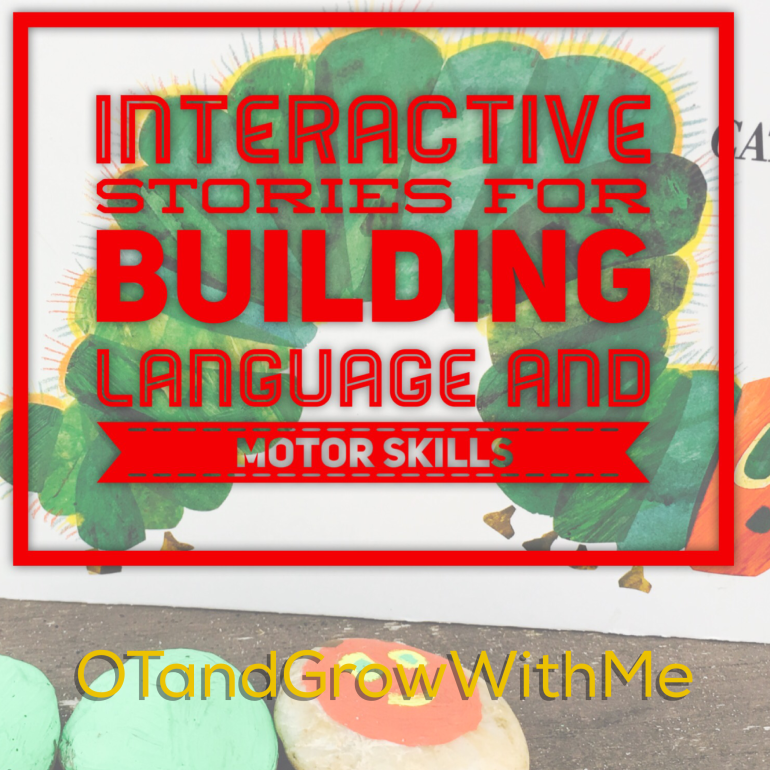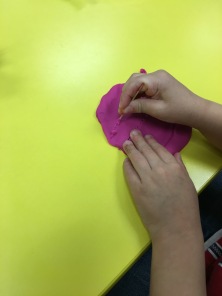Today on the blog we welcome Colleen Beck from The OT Toolbox which provides ideas and tools for therapists, teachers and parents. Colleen fills her blog with tons of brilliant ideas to help her readers build necessary skills for development. Her ideas have not just stopped at her site. Today I am thrilled to share with you Colleen’s newest idea: The OT Toolbox Community. This is a FREE community for occupational therapists to come together from all over the world and electronically collaborate as we build our skills as practitioners. There are so many cool aspects of this community, you simply must check it out for yourself! In the mean time, today Colleen has prepared some awesome content right here at OTandGrowWithMe for OTs about how to creatively advance our skills in practice through using the OT Toolbox Community. Enjoy!

As clinicians, we strive to advance professionally throughout our occupational therapy careers. We learn as much as we can about the setting and apply educational experiences to the job. We continue to learn throughout our careers, applying research and intervention strategies to client values. This is the advancement of clinical experience.
It can be a struggle for many occupational therapists to advance as in clinical experience. There may be issues such as time, cost, affordability, geographical limitations, availability of educational experiences, lack of information related to specific needs, frustration with finding online information, limited feedback from advance clinicians, increased effort and energy that goes into advancing as a professional, or restriction to access of research and evidence-based practices.
There are however, ways to advanced clinical experience and expertise as an occupational therapist in out-of-the-box manners.
Try some of these strategies to continue learning using traditional ways:
Community learning– Being part of a group of therapists can have a big impact on advancing as a clinical professional. When therapists connect in a small group, the ability to pass on clinical reasoning can be source for learning and passing on evidence-based practices. A community for learning can occur in various ways: an online setting, through the job, through local networking, or through other means.
Professional journal- Taking time out of each day or week to reflect on clinical experiences can have a big impact on advancing clinical expertise. Using that reflection time as a period to collect information either online or through other therapists can be one way to advance as a clinician. Creating short term and long term professional goals for oneself and creating a strategy to achieve those goals can help.
Roundtable meetups- Regular occupational therapist meetups can occur in a nontraditional manner. Consider a local meetup at a coffee shop or area college. Flyers can be distributed through local colleges and areas of workplace, added to social media, and shared among clinicians. Therapists can then meet for a set discussion in a laid-back setting such a coffee shop.
Collection of online resources- Having a collection of online resources related to specific job settings can be one way to store information. While there are many tools that can be used to store resources, imagine the possibility of connecting in collaborating with other therapists on the topic of expanding clinical expertise.
Each of these strategies are methods to develop and enhance the profession as occupational therapists. Advancing clinical practice as an occupational therapist is the reason The OT Toolbox Community was developed.
The OT Toolbox Community
As an integral part of The OT Toolbox website, The OT Toolbox Community promotes clinicians as a valuable “tool” for clients. By connecting and collaborating with other therapists, it is possible to exponentially enhance and promote the profession.
The OT Toolbox Community can be a means of networking with other therapists while allowing clinicians to bounce ideas off of one another. In the OT Toolbox Community, therapists can communicate and network with one another while asking and answering questions.
The OT Toolbox Community is a free resource for occupational therapy practitioners who struggle to find valuable resources in a timely and efficient manner. Seeking out and have answers to clinical questions can be a huge limit when it comes to time, energy, cost, and other issues.
The OT Toolbox Community provides a resource for therapist to connect with one another and collaborate on clinical questions. OTs and OTAs have the opportunity to ask questions related to specific their needs. Therapists can draw on clinical expertise to respond and answer other clinician’s questions. Imagine if many therapists joined together in sharing years of clinical expertise and resources and put them into one tool kit.
The OT Toolbox Community provides a one-stop location for navigating all of the information out there. It’s a place to access research. It’s a place to find best practice sources. It’s a place to promote collaborate, network, and mentor with one another as therapists.
The OT Toolbox Community is looking for you. Join hundreds of other occupational therapy professionals who have joined the community and are sharing questions, answers, resources, and valuable sources of clinical information.
A few facts about The OT Toolbox Community
Members are able to upload links to valuable resources that they have located online. These can be shared with other members and searched for by category. Check out the Resource Center and add one of your own.
Members are able to ask questions and answer questions. These are sorted by category to enable search queries in order to locate best practice answers in a timely manner. Stop over to the Question Forum and see if there is one that you can answer given your clinical expertise.
Members can upload their own documents and files to share with other therapists. This is a huge asset for data collection screenings and other sources of information for therapists.
Members can list job opportunities in the Job Area. Have a position open in your facility? Reach out to our large community of occupational therapy professionals and fill your positions fast!
Have an activity that you love using in treatment sessions? Snap a picture with your phone and share it as a Blog Post. It doesn’t have to be a fancy blog post…just share your idea with the community members.
Members can enhance the profession by sharing practice strategies that work!
In The OT Toolbox Community, all links, resources, questions, comments, and blog posts can be shared anonymously if you like.
Members can network and collaborate to enhance OT careers while building lasting relationships with colleagues.
There are more tools coming to The OT Toolbox Community very soon: an Evidence-Based Practice Library, mentor match ups, member badges, notification systems, and messaging options are just a few of the tools coming to the community!
As therapists, we know the value of self-reflection. Now, the ability to develop and grow in personal and clinical experience is right on your screen.
Stop by and join The OT Toolbox Community! It’s a thriving source of information for occupational therapist practitioners.
Thank you Colleen for sharing with our readers here at OTandGrowWithMe!
I am so excited to be a member of The OT Toolbox Community and reap all the awesome benefits as an OT advancing my skills and expertise!
Ready to Grow- Casey






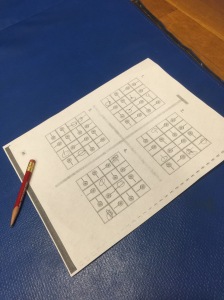











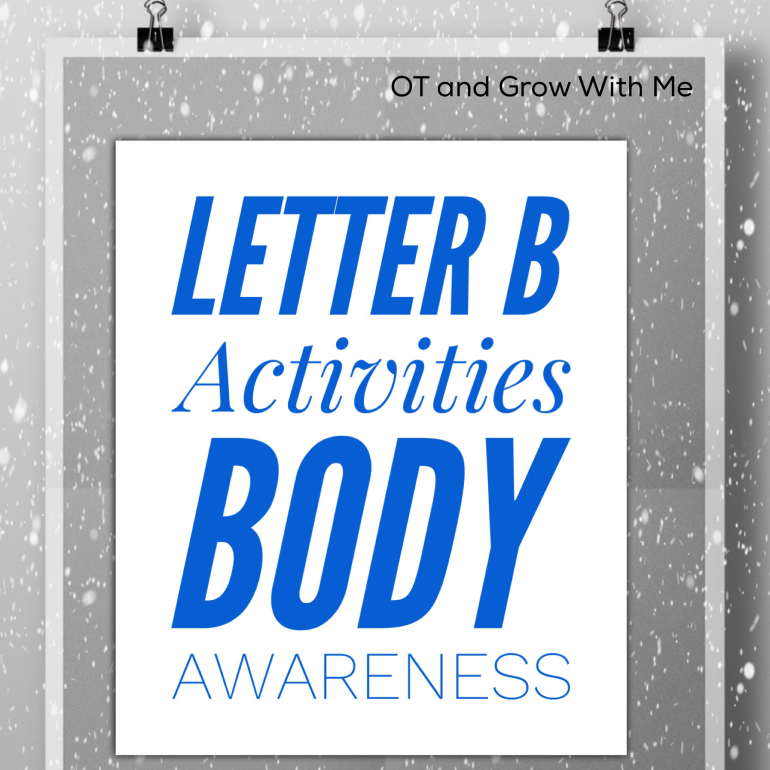





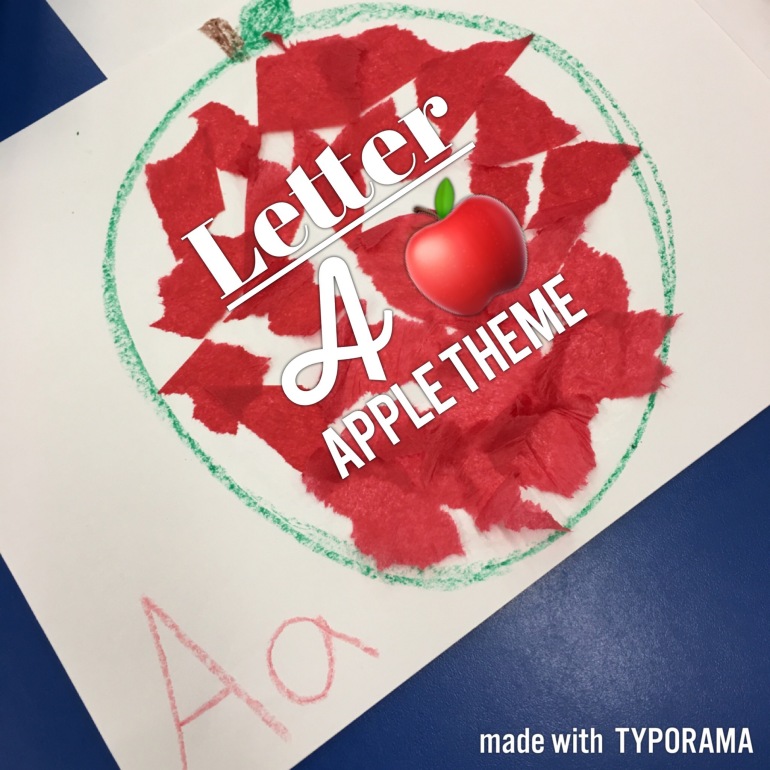

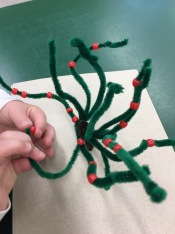 For this activity we had students bead small red pony beads onto a pipe cleaner “Apple tree”. This activity targeted bilateral coordination skills as well as fine motor grasping skills. For our older students we worked on picking up 2-3 beads one at a time and then holding them in the hand while threading each bead one at a time. This works on translation skills (moving items into and out of your hand using your fingers) and separation of sides of the hand (you hold the extra beads in hand while using thumb, index and even middle finger to pull bead out of hand and put on tree).
For this activity we had students bead small red pony beads onto a pipe cleaner “Apple tree”. This activity targeted bilateral coordination skills as well as fine motor grasping skills. For our older students we worked on picking up 2-3 beads one at a time and then holding them in the hand while threading each bead one at a time. This works on translation skills (moving items into and out of your hand using your fingers) and separation of sides of the hand (you hold the extra beads in hand while using thumb, index and even middle finger to pull bead out of hand and put on tree). This was our fun gross motor station. We targeted lots of skills with these games. First we had the students follow 1-2 step directions to place foam apples at different places on or around their body (ex behind your back, on top your head, etc). This worked on auditory processing and motor planning. Next we had the students through the apples into the basket one at a time. We emphasized opposite arm/leg movements (stepping with opposite foot of throwing arm) which is good for bilateral integration and eye hand coordination for throwing.
This was our fun gross motor station. We targeted lots of skills with these games. First we had the students follow 1-2 step directions to place foam apples at different places on or around their body (ex behind your back, on top your head, etc). This worked on auditory processing and motor planning. Next we had the students through the apples into the basket one at a time. We emphasized opposite arm/leg movements (stepping with opposite foot of throwing arm) which is good for bilateral integration and eye hand coordination for throwing. This activity was filled with great sensory opportunities! We included skills for opening apple sauce containers, pouring and spreading the applesauce on the plate. Next we worked on copying shapes or writing words in the applesauce on the plates. Several kids enjoyed writing with their fingers. We had students with tactile aversions do this with qtips or paint brushes. Several kids were interested in trying their apple sauce. You could use this task for Sensory play in food as you work to reduce anxiety and aversions kids have with trying new foods and textures.
This activity was filled with great sensory opportunities! We included skills for opening apple sauce containers, pouring and spreading the applesauce on the plate. Next we worked on copying shapes or writing words in the applesauce on the plates. Several kids enjoyed writing with their fingers. We had students with tactile aversions do this with qtips or paint brushes. Several kids were interested in trying their apple sauce. You could use this task for Sensory play in food as you work to reduce anxiety and aversions kids have with trying new foods and textures.


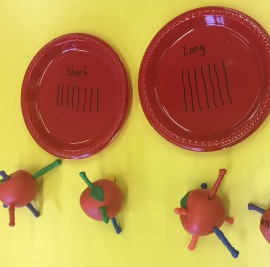 In this activity the students used their hand strength, fine motor and visual motor skills. Students worked to pull worms out of the apples and sort them by size. They then had to twist the worms back into the apple holes, which incorporated some great dexterity, 2 hand use, and hand strength.
In this activity the students used their hand strength, fine motor and visual motor skills. Students worked to pull worms out of the apples and sort them by size. They then had to twist the worms back into the apple holes, which incorporated some great dexterity, 2 hand use, and hand strength.



 In this activity the students moved red buttons around in a zip lock bag filled with green hair gel. The red buttons resembled apples and were used to build letters, shapes and pre-writing strokes while incorporating a fun tactile sensory task.
In this activity the students moved red buttons around in a zip lock bag filled with green hair gel. The red buttons resembled apples and were used to build letters, shapes and pre-writing strokes while incorporating a fun tactile sensory task.